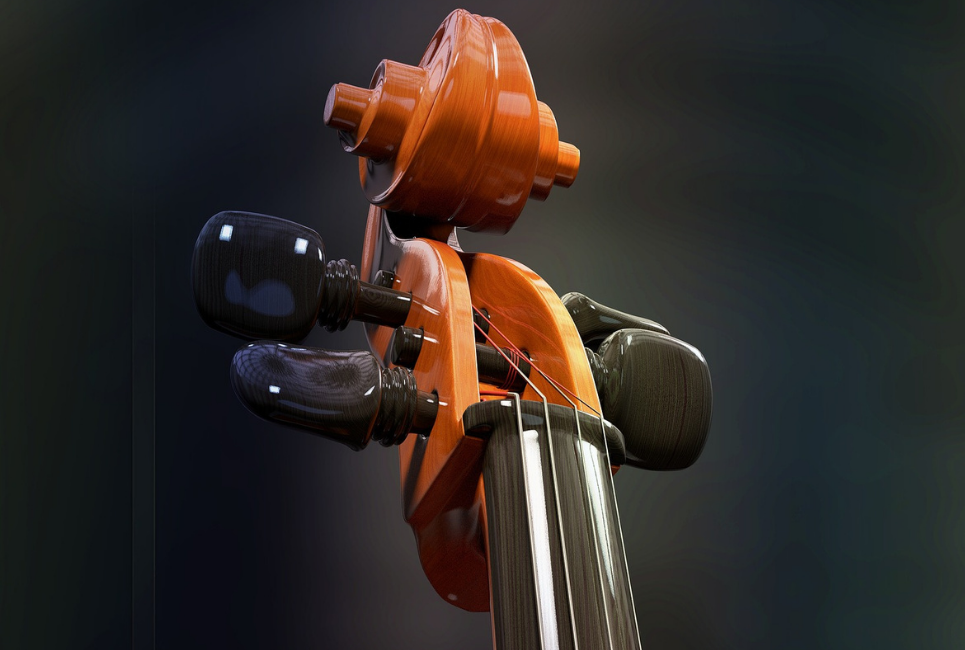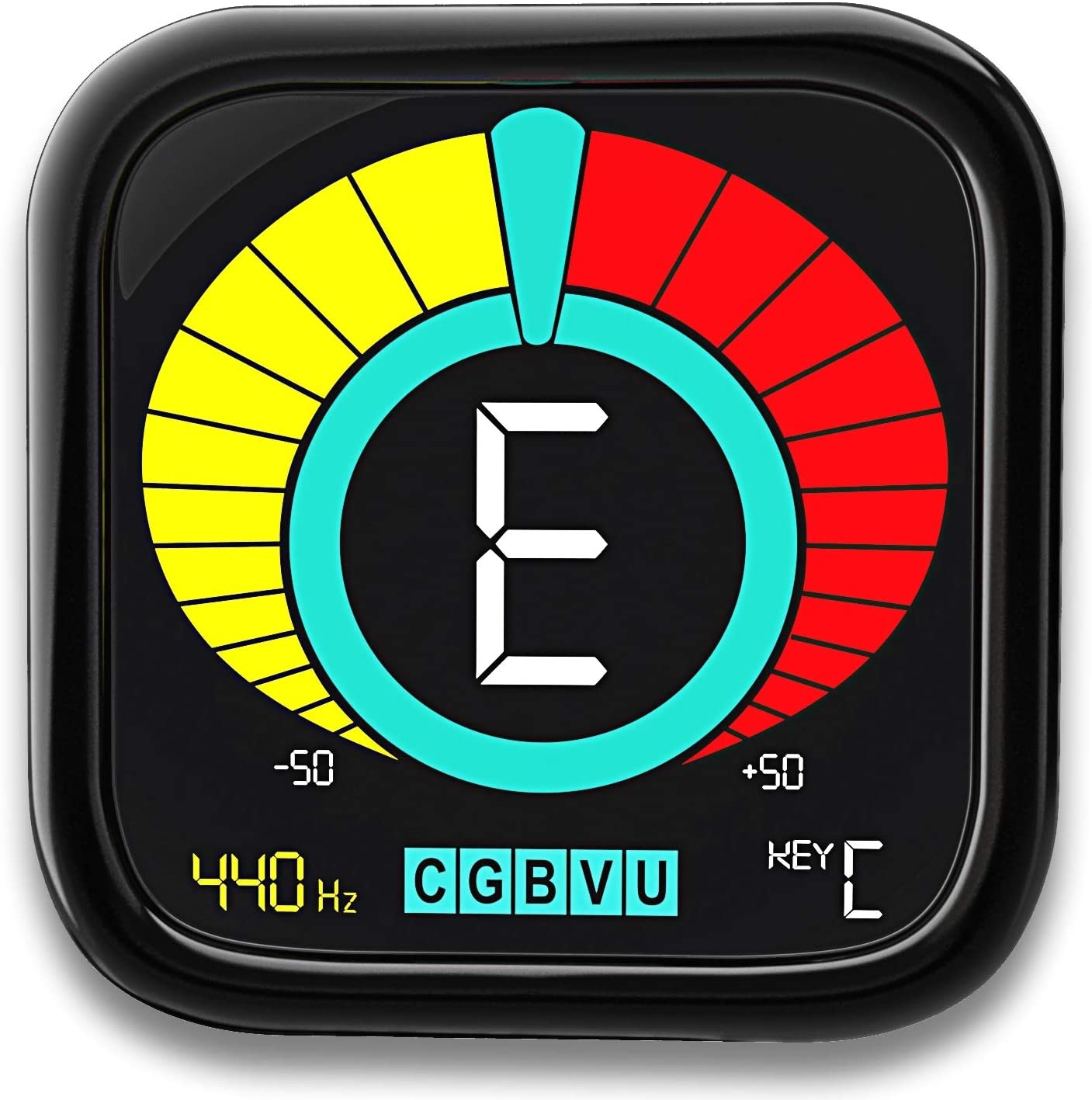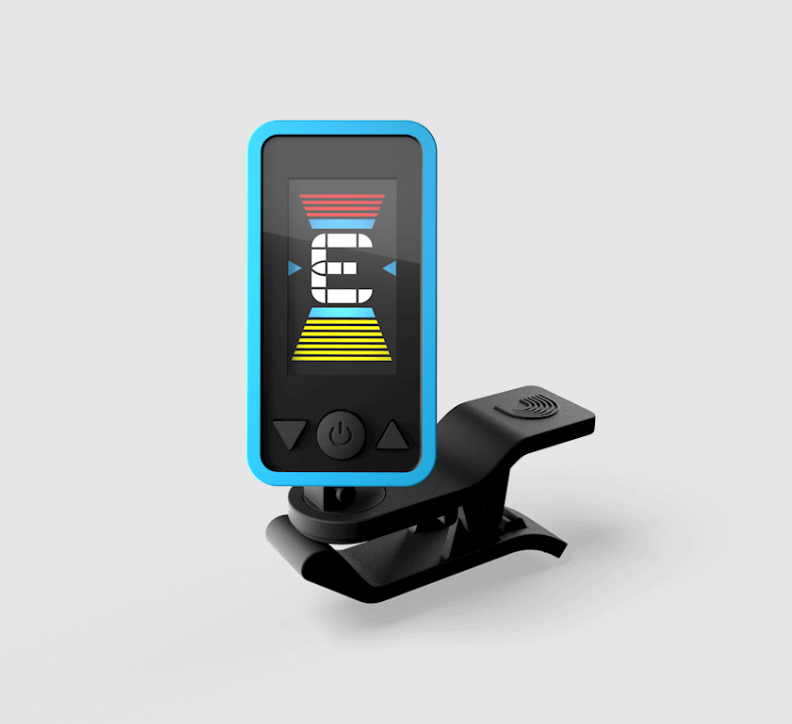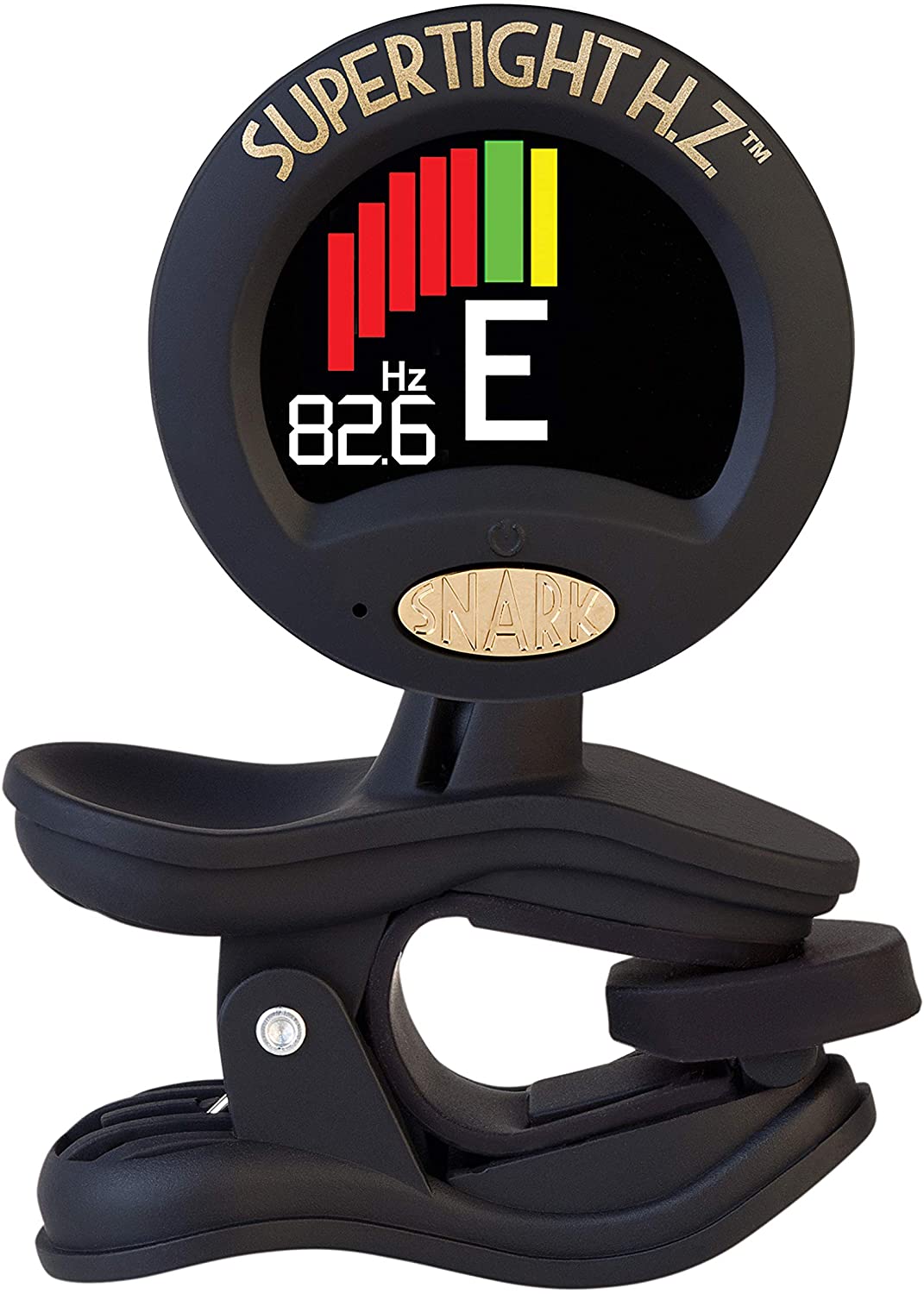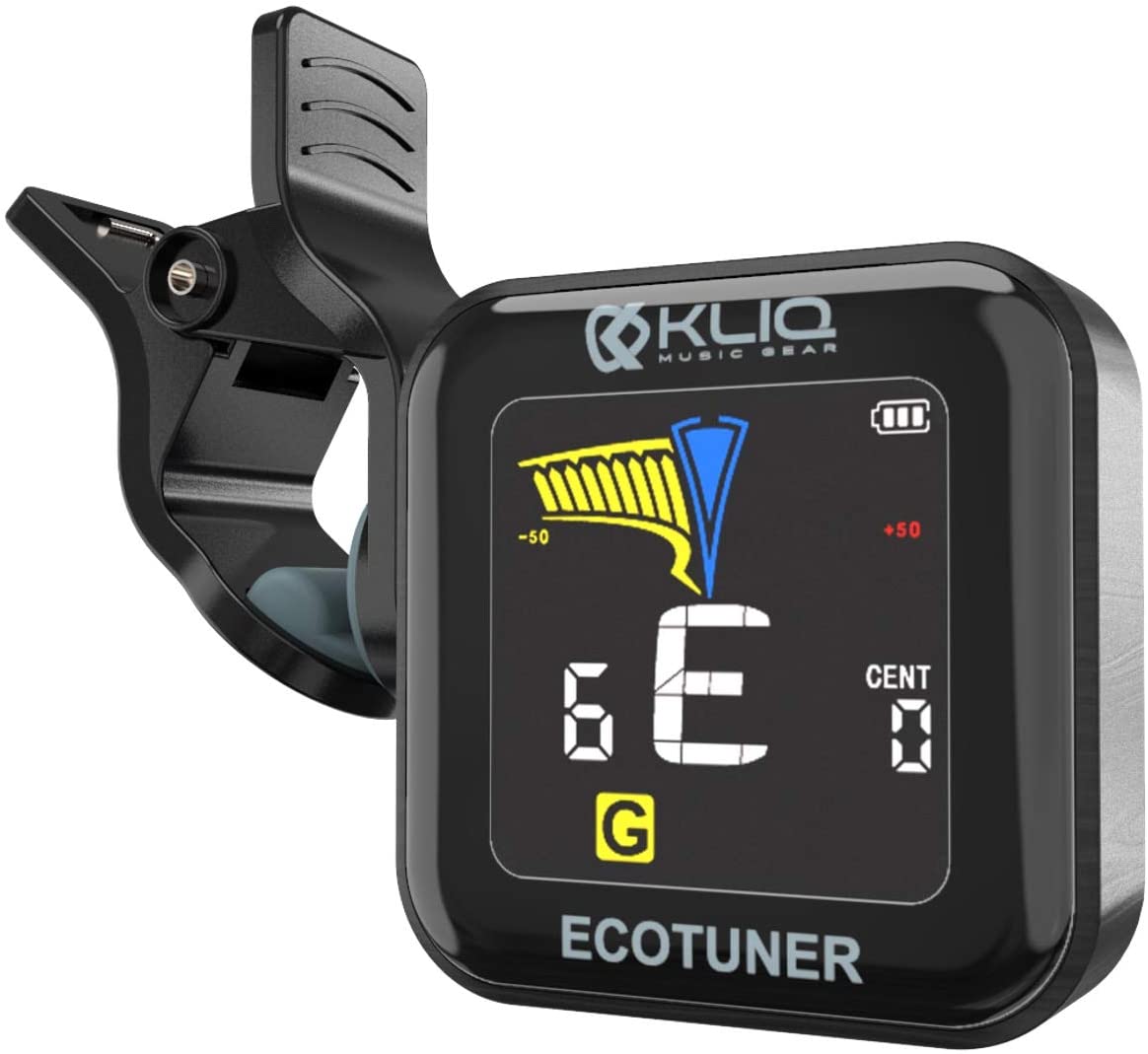- Best Violin Stand Options Guide - May 26, 2022
- Best White Violin Options - May 22, 2022
- How to Find the Best 7/8 Violin - May 19, 2022
Tuning an instrument is a ritual that every musician needs to go through when getting ready for a practice session, rehearsal, or performance. With a wide range of factors that may cause an instrument to go out of tune, there is no good excuse to ever skip it.
The cello is no exception to this rule – strings will generally need at least a couple of cents worth of an adjustment in tuning every time you sit down to play it. A question that remains is – what should you use as a point of reference in this process?
Highly professional cellists with years of experience under their belts will most likely just shrug and say something along the lines of “simply using their ears” with a reference note to start with. No wonder – after thousands of times tuning their cellos, and countless hours of playing it, all they need is that first A string in perfect shape to quickly tune the rest in perfect fifths.
For beginners, intermediate-level, and even semi-professional cellists, their go-to helping tool for tuning will be a tuner. There’s no shame in using one, as I’ll explain further on.
Why Would You Need a Cello Tuner?
Let me ask you a simple question – do you have a perfect pitch? No? Neither do I, and nor do the vast majority of musicians. Don’t feel bad – it is estimated that only between 1 to 5 out of 10,000 people are blessed with this extremely rare ability. So, what do we do?
While studies conducted in the past 10 years prove that adults can train their ears and brains in this direction, a tuner is a much more time-efficient and approachable solution to make sure that your cello is perfectly on pitch, especially for beginners.
Fear no more getting singled out by a conductor for ruining strings’ harmony because you didn’t manage to tune your cello on time with the rest of the orchestra before the rehearsal started. It is without a doubt that with a well-designed and accurate cello tuner, your life as a musician will improve significantly. Here’s an extensive guide on how to find the perfect one that will save you time, effort, and, most importantly, any potential embarrassment.
What Kind of Cello Tuner Should You Choose?
If you’ve already chosen to allow yourself to use the tuner’s help, then the answer to this question is plain and simple – it’s an electronic tuner that you’ll be looking for. There are many advantages to electronic tuners that cannot go unnoticed.
Why not use a good, old tuning fork, you may ask yourself? Just think about it this way – there’s a reason why you don’t see novel writers use typewriters anymore. The same goes for digital tuners and tuning forks – technology has simply made the latter obsolete in everyday use.
Don’t get me wrong – knowing how to use a tuning fork to tune your cello definitely won’t hurt, quite the opposite – it’s a great exercise to further train your ear. However, it just pales in comparison with quality digital tuners when it comes to how convenient and time-efficient it is to use. Among my musician friends, I haven’t seen one used in ages, whereas a digital tuner, I see at least one other than mine every time we practice.
However, not all electronic tuners are made the same. They come in all shapes and forms, with a variety of features available to them. In the next chapter, I’ll discuss one by one what in my opinion are the most important traits that make a quality tuner that will serve you for years.
What Makes a Good Electronic Cello Tuner?
There are a couple of things that you should consider when choosing an electronic cello tuner. I’ve narrowed them down to three that, in my opinion, play the biggest role in functionality:
- Clip-on
- Tuning options
- Quality and design
Clip-on
First and foremost, what I’ve found to be most important, especially in an orchestral setting, is for your tuner to have a clip-on vibration sensor. The ability to put the signal receiver directly on the instrument allows for the cleanest signal possible as these devices rely on vibrations instead of sound in space.
Getting a tuner of this kind was a gamechanger for me – as an early beginner, I was using either a tuner app on my smartphone or a cheaper, standard electronic tuner, both using the built-in microphone to pick up the sound of my cello. Neither of these provided the accuracy I needed as they would always be at least slightly thrown off by all of the pre-rehearsal noises coming from all directions.
Switching to a clip-on tuner was so liberating – finally, I was able to do my first round of tuning at any moment after showing up to the class or venue, and it was more accurate than ever before. Sometimes, I would not even need to touch the fine tuners of my cello when getting in tune with the rest of the players – I was already perfectly on pitch and ready to go.
Tuning options
Some tuners available on the market are built to tune specifically one instrument, for example, a guitar. My advice is to avoid them and find a so-called chromatic tuner that can read all 12 notes of the chromatic scale – here’s why.
If you, just like me, happen to be playing other string instruments other than a cello, then it’s only right to buy a tuner that will get the job done for all of them – after all, it is convenience that we’re looking for here. Chromatic tuners will also allow you to experiment with non-standard tunings if you ever want to explore this territory. Lastly, with this functionality, you’ll also be able to help out any other musician around you, cellist or not. Isn’t music about making connections with people anyway?
Another variable that you might want to consider is the range of reference pitches that your tuner will offer. You’ll find that it is most often between 430Hz and 450Hz, so just in case you and your ensemble are keen on experimenting with tuning your instruments to a non-standard pitch (for example, a baroque pitch of 415HZ), choosing a tuner that goes beyond that will be the way to go.
Quality and design
Just like with anything else, how much you’ll need to spend on your tuner will be greatly determined by its design, construction, and general quality of materials used by a manufacturer. This might be easily overlooked when making a decision on which one to choose, but I’d encourage you to give it some more thought.
As you’ll be using your tuner regularly, it’s only right that you get the one that feels natural to work with and you can rely on in the long run. With a well-designed and comfortable-to-use device, you’ll save yourself from any potential frustration that may contribute to additional stress before your performance or exam.
This is why I recommend trying a couple of tuners out before committing to buying one. The best option is to visit your local music store that will surely have at least a good couple of them available and use them on either your own cello or one that’s already in store.
First, pay attention to how much effort does it take you to get an instrument in tune and how natural it feels. Does the clamp of the tuner attach sturdily to the cello? Are you able to read the display easily? Personally, I like tuners with a 360° rotational design – twist the screen around instead of your neck!
Lastly, you can compare the response time between a couple of tuners you try out – even if it’s purely subjective, one might feel more “on it” than the other, and it’s that simultaneous understanding with the device that you’ll be looking for.
Once you’ve picked your favorites, pay attention to the quality of materials they’re made out of. Avoid cheap plastic and thin, prone to breakage display screens – just like your phone or keys, at some point you’ll most likely drop it on the floor by accident.
Built-in Metronome – Do You Need It?
An additional feature that you might want to consider is a built-in metronome. To answer the question of whether or not it’s worth investing in a tuner that has one, let me circle back to my earlier mention of smartphone apps dedicated to musicians.
We’ve already established that in most circumstances, using your phone to tune your instrument brings subpar results in comparison with clip-on tuners due to relying on the microphone as a signal receiver. However, when it comes to metronomes, I’d argue that using your phone for this purpose is, by all means, a viable solution that won’t set you back in any way.
With a lot of professional and free metronome apps to choose from, I’ve never found myself wishing that my tuner would have this functionality. Especially, considering that most often it’s just an extra feature without many options to choose from in itself.
So unless your circumstances prevent you from using your phone as a metronome (maybe you’re just too distracted with social media notifications during practice), I say – find an app you like and cross that out from your list.
My Top 4 Recommendations for Cello Tuners
With all of the above in mind, you should be well prepared to decide on what tuner offers what you’re looking for at the best price. Now that we got that out of the way let’s look at a couple of cello tuners that I can recommend with confidence – either used by my musician friends or me.
Crescendo ZenTuner
I’m just going to go ahead and say it. This cello tuner is my absolute favorite. I’ve been using this little fellow for nearly two years now, and it has not failed me once. Let me tell you why:
Firstly, I love its simple design with all buttons on the side and a clear, bright LCD screen that has survived a bunch of falls and even one direct stepping on without a single crack. It’s just the perfect size, with a solid, sturdy clamp and a 360-degree swivel, ensuring highly comfortable use.
Secondly, it’s just spot on with tuning just about any string instrument. Chromatic mode is fast and highly accurate, and the display is as clear as day. Speaking of the display, it dims automatically after a while of not receiving any signal and then shuts off completely after 3 minutes, so no worries about leaving it on by accident and running your battery dry. May I add it’s also affordable, just shy of $20, and comes with a 3-year warranty? I rest my case.
Pros
- Highly accurate chromatic mode with a fast response
- Solid construction, fully rotational swivel, and a sturdy clamp with a silicone protective rubber
- Affordable with a 3-year warranty
Cons
- No metronome
D’Addario Eclipse Tuner
The renowned D’Addario brand’s offering is strong, and I see it often used among musicians. No wonder – it offers everything you’ll need at a very affordable price ($15), so it’s bound to be a popular choice. However, as you might already anticipate, it has some shortcomings that I’ll need to mention.
Let’s start on a good note, though. As far as tuning goes, Eclipse does a phenomenal job, and its accuracy leaves nothing to be desired. The manufacturer claims that it’s designed to be exceptionally precise with lower notes, making it a product dedicated primarily for cellists and double-bass players (but it still works great with other string instruments).
The sizeable, vertical screen is easy to read but could be brighter – readable inside with artificial lighting but bring it outside on a sunny day, and you’re in trouble.
Apart from a dim display, the biggest flaw of this tuner is the material that it’s made out of. The plastic feels a little cheap, and the screen’s protective glass is quite thin. It shouldn’t be an issue for careful players, but if you’re known to be sloppy, you might want to spend a little extra on something more durable.
Pros
- Designed specifically for lower range string instruments, exceptionally accurate with cellos and basses
- Affordable
- Neat look and different colors to choose from
Cons
- Dim screen
- Lower quality materials
Snark ST8-HZ Super Tight Clip-On Tuner
ST8-HZ model is an improvement on a well-established ST-8, where HZ in the name stands for vibration sensor “Plus Hertz” that provides a tune accurate to 1 / 10th of 1 Hz. With a wider than usual pitch calibration between 415 and 466 Hz, this device is the best choice for those who look for almost surgical accuracy in their tuning.
While solid in functionality, its construction design could use a little improvement. I’ve heard from Snark users that the plastic clamp and thin rotational arm holding the screen tend to break more often than you’d want them to. The manufacturer offers a warranty for only one year since the purchase date.
Apart from the above flaw, Snark ST8-HZ is a great offering with all the necessary features in place, a built-in metronome, and widely available at a reasonable price.
Pro
- Surgical tuning accuracy
- Wide pitch calibration
- Built-in metronome
Cons
- Prone to break construction design
- 1-year warranty
KLIQ EcoTuner
Last but not least, let me tell you about KLIQ EcoTuner. I’ve decided to include it here because it’s one of the very few cello tuners on the market that are USB rechargeable.
Nowadays, you’ll have much better luck finding a USB cable lying around rather than a spare CR2032 battery that most of the other tuners use as a power supply. And it takes only 1.5 hours for a full recharge that will make it run for good 6 hours straight.
Of course, this luxury comes at a higher price making this tuner the most expensive on the list. But once you invest a little extra, you no longer have to worry about much. Tuning is fast and accurate every time. It has an excellent build, sturdy clamp with silicone protective rubber, a highly sensitive piezo sensor, and a bright, clean display. On top of all of that, it comes with a 3-year warranty.
Pros
- USB rechargeable
- Fast and highly accurate
- Great build
- 3-year warranty
Cons
- On the expensive side
- No metronome
FAQ
Even with so much information provided, there’s always at least one stone that’s left unturned. Hopefully, the following FAQ will help clear any uncertainties that you might still have.
Answer: Luckily, not much – from my experience, you should not have to spend more than $15 – $25 on a tuner that will satisfy your needs.
Answer: For best results, clip it on the bridge of your cello, but attaching it to the pegbox should work fine as well.
Answer: It depends on the frequency of playing. From my experience, if you tune your cello in the morning and then have multiple practice sessions during the day, that one tuning should be enough. The next day, however, it will most likely need at least a very slight tuning again.
Answer: Not at all. While you’ll still need to get in tune with the rest of the musicians in your ensemble, nobody will look down on you if you use a tuner before that.
Conclusion
Now that we’ve come to the end of this guide, I hope that you’ll be able to easily navigate through a large variety of cello tuners available on the market. I believe that if you keep in mind the most important criteria that I listed, you’ll find a device that will serve you well and become an indispensable tool in your arsenal.
As I’ve already mentioned, my best recommendation is Crescendo ZenTuner. It brings excellent results every time I use it and has lasted for more than two years now without a hitch. No matter what experience level you’re at, I’m sure you’ll recognize this tuner for its overall high quality in design and functionality.
But of course – test it out before you commit to the purchase and compare it to other available options. Ultimately, what matters is choosing a tuner that works best for you and you only.
With all that said, good luck on your journey, and I wish you a lot of fast and precise tunings in the future.
Looking for more interesting readings? Check out:

